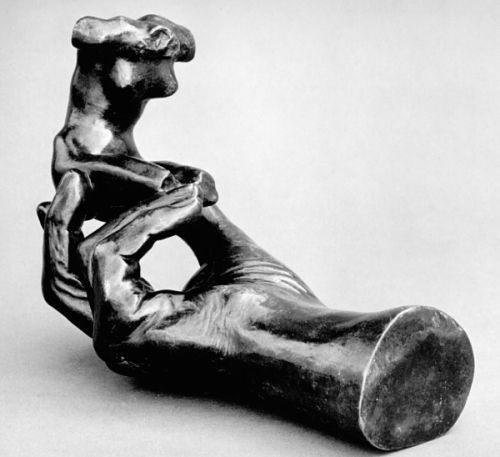H. de Roos - The critique of the toronto exhibition |
|
THE AUTHENTICITY OF A MOULAGE: THE HAND OF RODIN (2) The authorship of Bénédite is supported by Michelle Facos, quoting Judith Cladel in the catalogue on the Cantor gift to the Brooklyn Museum, that comprised a 1971 posthumous bronze cast, cast by Georges Rudier, No. 7/12, commissioned by the Musée Rodin: (The torso) is cradled in a seated position by the relatively gargantuan right hand of Rodin, which was made several weeks before the sculptor´s death, in November 1917, by one oh his assistants, Paul Cruet, at the request, according to Judith Cladel, of a Monsieur Bénédite.(…) It is not known whose idea it was to create this composite work, but many scholars seem to believe that is was not Rodin´s. Nonetheless, Hand of Rodin was certainly created in a spirit consistent with the master´s own, for it is remarkably similar in conception to such works as The Hand of God or The Hand of Devil holding Woman. [Ambrosini, p. 141]
The Cantor Foundation Hand of Rodin bronze Apart from the fact, Michelle Facos seems to have no clue who this "Monsieur Bénédite" was, is it not stunning to see how this Rodin imitation now is promoted as a work of art, "created in a spirit consistent with the master´s own"? The irony is - Arseneau points out – Rodin considered a moulage on the body as unworthy of a sculptor and in the case of the Age of Bronze, went to great lengths to prove he had not used this technique. After the Age of Bronze, Rodin even created over-lifesize or under-lifesize models on purpose, just to prove he did not need it: Rodin began working on the St. John around 1878, partly with the intention of clearing himself of the charges which had been made against his Age of Bronze (..), namely that he had cast it from a living model. Note 2: Bartlett (p. 99) tells us that at the end of the 1877 Salon, Rodin was still disturbed by the accusations that his Age of Bronze had been cast from the living model. "He thought that the only way by which he could get it for himself was to make another statue, this time larger than life, and in the modelling of which he could not use or adapt reproductions from molds made on the living model…" [De Caso, p. 73, 78] To call this assemblage now consistent with Rodin´s spirit, just because the subject imitates the hands Rodin had created, without addressing the moulage problem, is naïve, to put it mildly. To me, this hyperrealistic plaster does not look like a Rodin at all: It rather looks like an artefact from Madame Tissaud´s Wax Cabinet.
|
